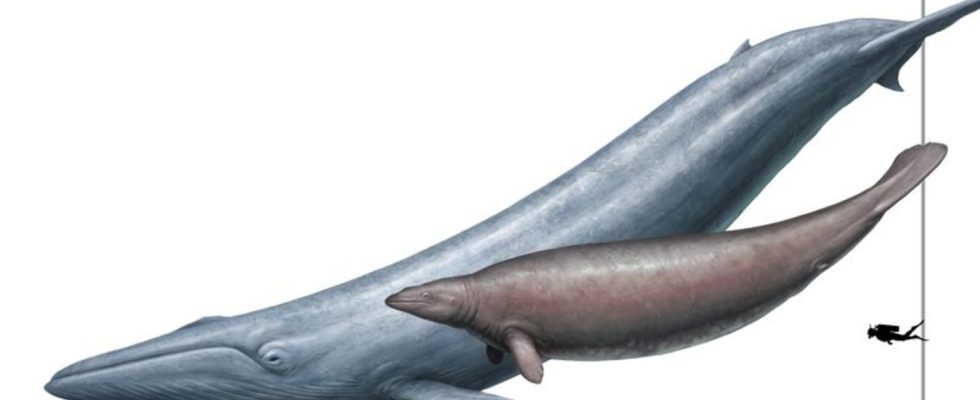Animals
But not so colossal? Doubts about the calculated whale weight
Researchers originally estimated Perucetus’ mass to be greater than that of a blue whale due to its thick bones. photo
© Cullen Townsend/-/dpa
Does Perucetus colossus live up to its colossal name? Researchers have expressed doubts about previous estimates of the weight of the extinct whale.
After analyzing the remains of an extinct whale last year, it was possibly the heaviest animal of all time.
Two researchers have now come to different conclusions: Perucetus colossus was by no means so colossal, but rather in the league of those living today Whales played, write Ryosuke Motani from the University of California in Davis and Nicholas Pyenson from the Smithsonian Institution in Washington in the journal “PeerJ”.
Doubts about total weight
The whale’s partial skeleton, around 39 million years old, was discovered in southern Peru, without a skull or teeth. A group led by Eli Amson from the Stuttgart State Museum of Natural History examined the bones and concluded that they had a total weight of 180 tons (at least 85 to a maximum of 340 tons). The team reported in the journal Nature that whales would have developed into gigantic animals earlier than previously thought.
The bones of Perucetus colossus – roughly translated as “the colossal whale from Peru” – are unusually dense. In aquatic animals, heavy bones can compensate for the buoyancy caused by body fat and blubber. Each vertebra in the find weighs well over 100 kilograms, and at 5 to 8 tons, the approximately 17-meter-long skeleton is two to three times as heavy as the 25-meter-long skeleton of a modern-day blue whale, Amson’s team explained at the beginning of August 2023.
There are now doubts about the immense total weight derived from this. “It would have been difficult for the whale to stay on the surface or even leave the seabed – it would have had to constantly swim against gravity to do anything in the water,” Motani points out. Motani and Pyenson argue that it is always difficult to draw conclusions about an animal’s total weight from its skeletal mass; all methods used have their pitfalls.
More like 60 to 70 tons
“We believe that the available data are too limited to accurately estimate the body mass of Perucetus and that the limited accuracy of available estimation methods exacerbates the problem,” said the research duo. Data from manatees, for example, showed that their bodies are relatively light relative to their skeletal mass.
Motani and Pyenson estimate that the 17-meter-long Perucetus probably weighed 60 to 70 tons, about as much as a modern sperm whale. Even a 20-meter-long Perucetus probably only weighed around 110 tons – and therefore still significantly less than the largest blue whales (Balaenoptera musculus), which are estimated to weigh around 270 tons.
Ultimately, however, further finds such as a skull would be required in order to be able to draw more precise conclusions about the dimensions of Perucetus colossus.

